'The Hoff' crab is new ocean find
- Published
Hoff crabs filmed around volcanic vents on the Southern Ocean floor
UK scientists have found prodigious numbers of a new crab species on the Southern Ocean floor that they have dubbed "The Hoff" because of its hairy chest.
The animal was discovered living around volcanic vents off South Georgia.
Great piles of the crabs were seen to come together.
The creature has still to be formally classified, hence the humorous nickname that honours the often bare-chested US actor David Hasselhoff.
It is, however, a type of yeti crab, said Professor Alex Rogers who led the research cruise that found the animal, and it will be given a formal scientific name in due course.
Yeti crabs were first identified in the southern Pacific and are recognised for their hairs, or setae, along their claws and limbs that they use to cultivate the bacteria which they then eat.
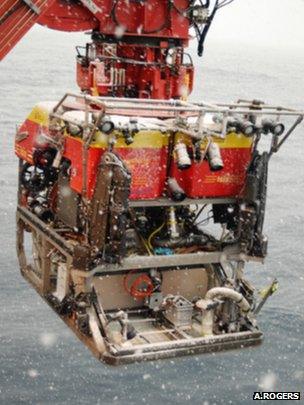
Isis has the capability to dive to more than 6km below the ocean surface
But the new species found around the vents that populate the East Scotia Ridge are slightly different in that they exhibit long setae on their ventral surface - on their undersides.
"Their nickname on the cruise ship was the 'Hasselhoff crab', which gives you some idea of what they look like," explained Dr Rogers from Oxford University's Department of Zoology.
"The crab occurs in staggering densities. It is just incredible to see these animals literally lying in heaps around the diffuse flow of these vents.
"In places, they reached as many as 600 individuals per square metre."
The Hoff crab is just one of a number of species new to science to come out of the cruise, which also included researchers from the University of Southampton, the National Oceanography Centre and the British Antarctic Survey.
The team reports novel types of starfish, barnacles, sea anemones, and even an octopus - all living some 2,500m down.
The cruise employed the UK deep-diving robotic submersible, Isis, to investigate the slowly spreading ridge near Antarctica.
It is dotted with hydrothermal vents - cracks in the volcanic rock where mineral-rich, hot waters gush from below the seabed to sustain an extraordinary array of organisms.
What surprised the team was not so much what they found, but rather what was absent.

An unidentified pale octopus was seen nearly 2,400m down
Vent systems in other parts of the world are dominated by animals such as tubeworms, mussels, other types of crab, and shrimps. These were all missing from the East Scotia Ridge.
This is fascinating because the cruise was originally initiated to investigate the hypothesis that the Southern Ocean acted as a gateway between the other major oceans of the world, allowing for the dispersal of vent organisms over geological timescales.
It was thought the Southern Ocean's strong currents might help drive species from one ocean basin to another, and finding a very diverse group of animal types also at East Scotia Ridge would have been a powerful statement in support of this dispersal hypothesis.
The team did see some similarities - such as barnacles that were very similar to Pacific crustaceans, and limpets that looked the same as some Atlantic forms - but nothing like what had been expected.
"We think the very harsh conditions of Antarctic waters, particularly in terms of their extreme seasonality, probably act as a barrier to some of the vent fauna," explained Professor Rogers.
"What we've found is a much more complex situation than we were anticipating, and this has pretty much changed our ideas about how vent organisms are distributed at a global scale."
The results of the cruise are reported in this week's edition of the journal PLoS Biology, external.
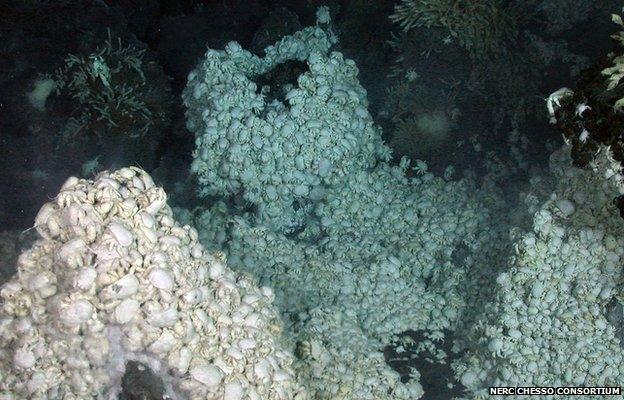
The crab occurs in staggering densities - up to 600 individuals per square metre
Jonathan.Amos-INTERNET@bbc.co.uk and follow me on Twitter, external
- Published28 December 2011
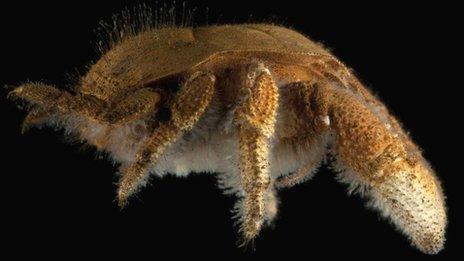
- Published2 September 2011
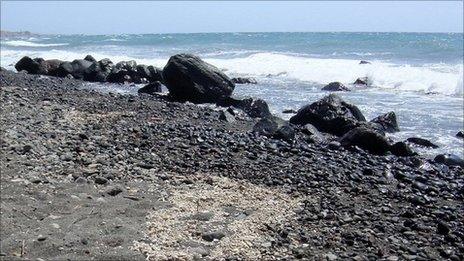
- Published22 August 2011
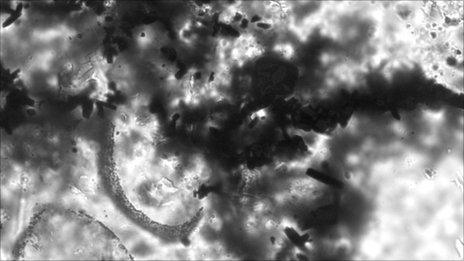
- Published16 December 2010
- Published15 December 2010